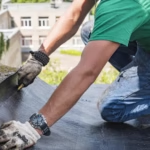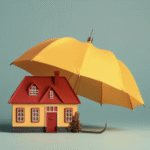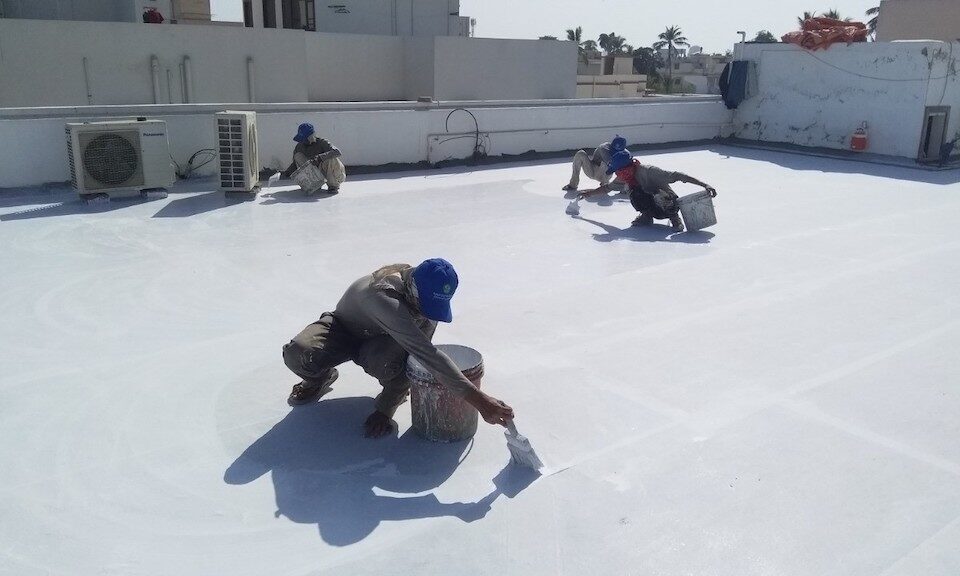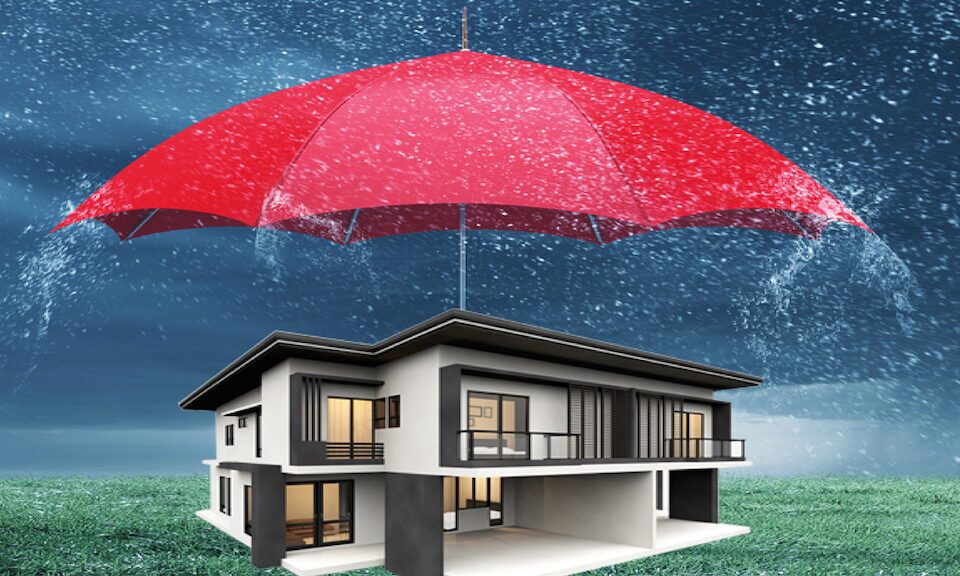Is Waterproofing Effective? A Simple Guide for Every Homeowner
Yes, waterproofing is highly effective when done correctly using the right methods and materials. It acts as a protective shield against water infiltration, which is one of the major causes of long-term structural damage in buildings. Whether it’s a residential terrace, commercial roof, basement, or bathroom, waterproofing prevents issues like dampness, seepage, mold growth, and paint peeling.
Modern waterproofing solutions, such as liquid membranes, Dr. Fixit waterproofing products, polyurethane coatings, and HDPE membranes, are designed to last for years. They offer resistance against weather conditions, moisture, and even chemical exposure. When combined with expert application and regular maintenance, these systems ensure long-lasting protection and increase the life of your property.

Waterproofing is especially effective in regions with heavy rainfall or high humidity, like many parts of India. Not only does it preserve the structure, but it also saves on future repair costs by preventing water-related damage before it begins.
Why Building Waterproofing matters more than you think?
Imagine a home where the walls are always dry, ceilings never leak during rainstorms, and there’s no smell of mold or signs of dampness. Sounds like a dream, right? The good news is — it’s possible with proper waterproofing. But is building or home waterproofing truly effective? Or is it just another expensive buzzword?
Waterproofing is often overlooked during construction or renovation, but it plays a critical role in the long-term health of any building. Without proper waterproofing, structures become vulnerable to water infiltration, leading to issues like damp walls, mold growth, structural weakening, and expensive repairs. Over time, this damage can affect not only the aesthetics but also the safety and stability of the building.
Whether it’s rainwater seeping through the terrace, moisture rising from the foundation, or leaks in bathrooms and balconies, water can silently degrade materials like concrete, steel, and wood. That’s why waterproofing is not a luxury—it’s a necessity. It forms a protective barrier that keeps moisture out and extends the life of the structure.
Modern waterproofing solutions are highly advanced and effective. Using products like Dr. Fixit URP, waterproofing tapes, coatings, and membranes, professionals can seal vulnerable areas and ensure long-term protection. Investing in waterproofing early prevents costly renovations later.
In climates like India’s, where monsoons and humidity are a constant challenge, building waterproofing isn’t just smart—it’s essential. It protects your investment, maintains the property’s value, and ensures a safe, dry, and healthy living or working space.
What is Waterproofing in Homes and Buildings?

Waterproofing is a method used to prevent water from penetrating into your home’s walls, roofs, foundations, and other surfaces. It works like a shield against rain, moisture, and humidity — all of which can cause serious problems over time.
Whether you’re building a new house or trying to protect an old one, waterproofing ensures that water doesn’t seep in and weaken the structure or ruin the interiors.
Waterproof vs. Water-Resistant
- Water-resistant: Can handle moisture but may eventually let water through.
- Waterproof: Completely blocks water — even during heavy rain or flooding.
In home construction, waterproofing is especially important for flat roofs, bathrooms, basements, balconies, and exterior walls.
Common Areas That Need Waterproofing in a Home
Waterproofing is essential for protecting your home from moisture damage, mold, and structural decay. Here are the most common areas in a house that require proper waterproofing:
1. Terrace / Roof
Exposed to harsh weather, terraces and roofs are prone to cracks and water seepage. Roof waterproofing prevents leaks and enhances durability.
2. Bathroom & Toilets
These areas are always exposed to water. Waterproofing beneath tiles and around fixtures is crucial to prevent seepage into adjoining rooms or floors.
3. Basement / Foundation
Being below ground level, basements are highly susceptible to moisture and groundwater. Waterproofing the foundation walls and floor is essential to avoid dampness and structural issues.
4. Exterior Walls
Rainwater and humidity can penetrate poorly sealed walls, causing damp patches and mold. Applying waterproof coatings helps keep walls dry.
5. Balconies
Balconies often have improper drainage and are exposed to rain. Waterproofing prevents water from leaking into rooms below.
6. Kitchen & Utility Areas
Water from sinks and washing machines can cause seepage if not contained. Sealing plumbing areas helps prevent future leakage.
7. Water Tanks & Sumps
These should be waterproofed from inside to prevent leakage and contamination.
Roof Waterproofing – Your Home’s First Defense
Roof waterproofing is the process of applying protective materials or coatings to a roof to prevent water from penetrating into the structure. It acts as a barrier against rain, moisture, and environmental damage, ensuring that the roof remains dry and leak-free over time.
Roofs are constantly exposed to harsh weather conditions—sun, rain, wind, and sometimes standing water. Without proper waterproofing, water can seep through cracks, joints, or damaged surfaces, leading to problems like damp ceilings, mold growth, peeling paint, and even structural weakening.
Types of Roof Waterproofing Systems
- Liquid waterproofing membranes (like Dr. Fixit Roofseal)
- Bituminous membranes
- PU (polyurethane) coatings
- Acrylic-based coatings
- Cementitious waterproofing
- Elastomeric sheets or membranes
The choice depends on the roof type (flat or sloped), usage, and climate conditions. Waterproofing not only extends the life of your roof but also improves the energy efficiency of your building by reducing heat absorption.
Wall Waterproofing – Stop Dampness Before It Spreads
Wall waterproofing is the process of applying protective treatments or materials to internal or external walls to prevent water seepage, dampness, and moisture damage. It ensures that walls stay dry, strong, and free from problems like mold, efflorescence, or peeling paint.
There are two main types of wall waterproofing:
1. External Wall Waterproofing
This protects the outer surfaces of buildings from rain, humidity, and environmental exposure. Waterproof paints, coatings, or membranes are applied to create a barrier against water infiltration.
2. Internal Wall Waterproofing
This addresses moisture that seeps through the walls from bathrooms, kitchens, or nearby water sources. Waterproof coatings or cementitious barriers are applied from the inside.
Common signs you need wall waterproofing:
- Damp patches or discoloration
- Paint bubbling or peeling
- Mold or mildew growth
- A musty smell
Best Waterproofing Products for Your Home
Here are the most common and helpful waterproofing tools used in buildings:
1. Waterproofing Tape
Use on: Roof tiles, gutters, skylights, window edges. Benefits: Quick to apply, affordable, works instantly.
2. Waterproofing Glue
Use on: Outdoor furniture, tiles, plumbing joints. Benefits: Flexible and water-resistant; long-lasting bond.
3. Waterproofing Paint
Use on: Interior walls, exterior facades, bathrooms. Benefits: Easy DIY solution to block moisture and stop stains.
4. Waterproofing Chemical
Use on: Concrete walls, basements, terraces. Benefits: Penetrates surfaces; provides deep protection from inside.
5. Waterproof Wallpaper
Use in: Kitchens, bathrooms, balconies. Benefits: Combines style with function; resists steam and humidity.
Mistakes to Avoid in Home Waterproofing
Waterproofing is a critical part of protecting your home, but it’s often done incorrectly or neglected altogether. Avoiding these common mistakes can save you from future damage, costly repairs, and long-term headaches:
- Skipping a Professional Assessment
- Using Low-Quality Materials
- Ignoring Surface Preparation
- Waterproofing Only Visible Areas
- Not Addressing the Source of Leakage
- Lack of Maintenance and Inspection
Why Hire Professionals for Home Waterproofing?
Hiring professionals for home waterproofing is a smart and essential investment. While DIY methods may seem tempting, they often lack the precision and durability that expert work provides. Professionals are trained to accurately identify the source of water seepage—whether it’s from the terrace, walls, basement, or plumbing lines—and recommend the right waterproofing solution. They use high-quality materials like Dr. Fixit products and advanced membranes, ensuring long-lasting protection tailored to your home’s specific needs.
Cost vs. Value – Is Waterproofing Worth It?
Absolutely—waterproofing is 100% worth the investment when you consider the long-term value it brings to your property. While the upfront cost may seem high, the benefits far outweigh the expense.
The Cost Factor
Waterproofing involves skilled labor, quality materials, and proper surface treatment. Depending on the area (roof, basement, bathroom, etc.), costs can range from ₹40 to ₹300 per sq.ft.
The Value It Offers
- Prevents structural damage
- Protects interiors
- Increases property value
- Improves health
- Enhances durability
FAQs on Building Waterproofing
Q: Is waterproofing permanent?
A: Most systems last 5–10 years and may need reapplication after that.
Q: Can I waterproof an old building?
A: Absolutely. In fact, old buildings need it more to prevent structural damage.
Q: What’s the best time to waterproof my home?
A: During dry weather — before the rainy season begins.
Q: Is waterproofing safe for indoor air quality?
A: Yes. It prevents mold and mildew, which can harm your health.
Conclusion: Is Building Waterproofing Effective? Absolutely — If You Take the Right Steps
Building or home waterproofing isn’t a luxury — it’s a necessity. It protects your house, belongings, and health. Whether it’s roof waterproofing, wall waterproofing, or using products like waterproofing paint, glue, chemical, or tape, the right materials and application can keep your home safe from water damage.
So, inspect your home. Spot the leaks. Choose your materials. And act before the next storm hits.
Waterproofing is not just effective — it’s essential for every home.






